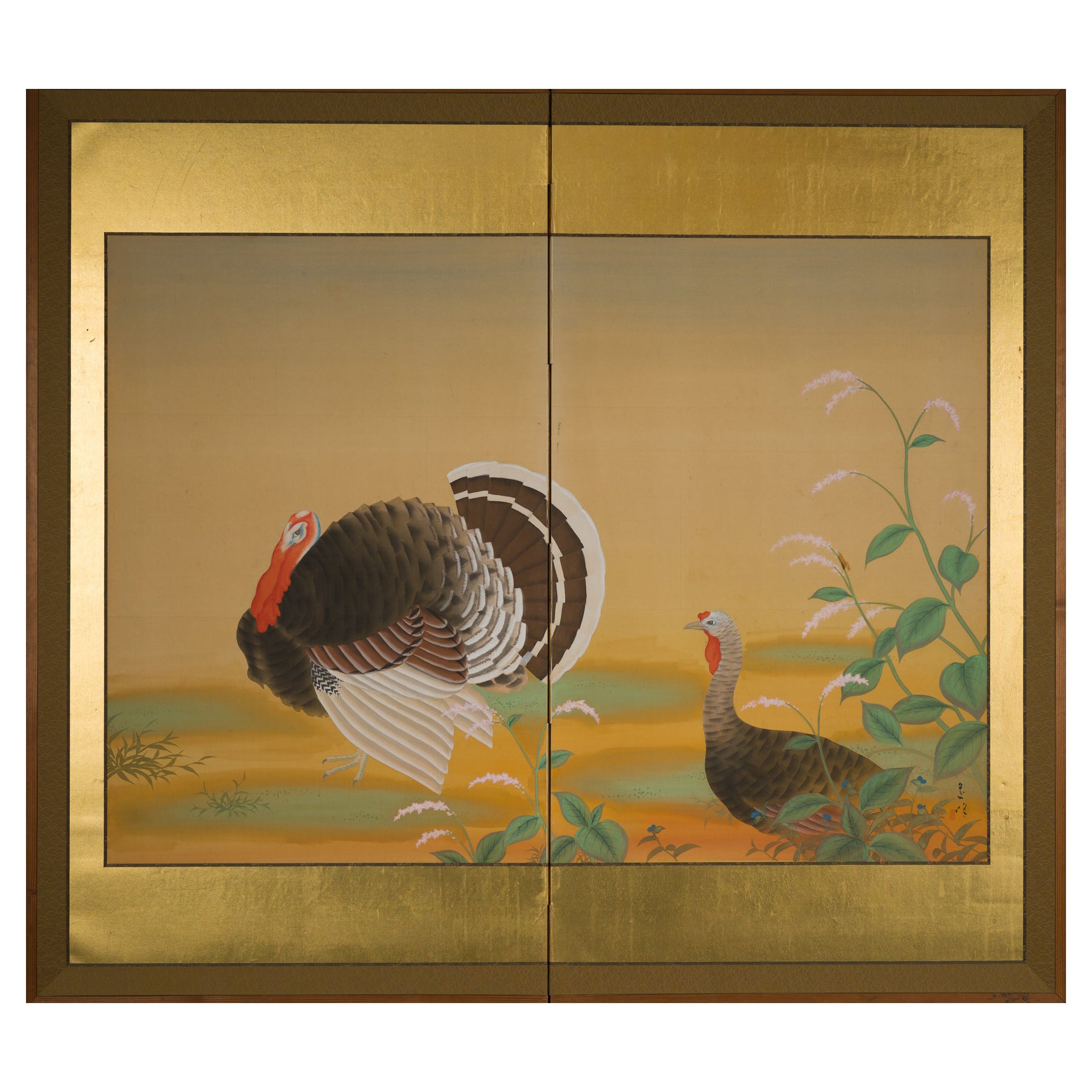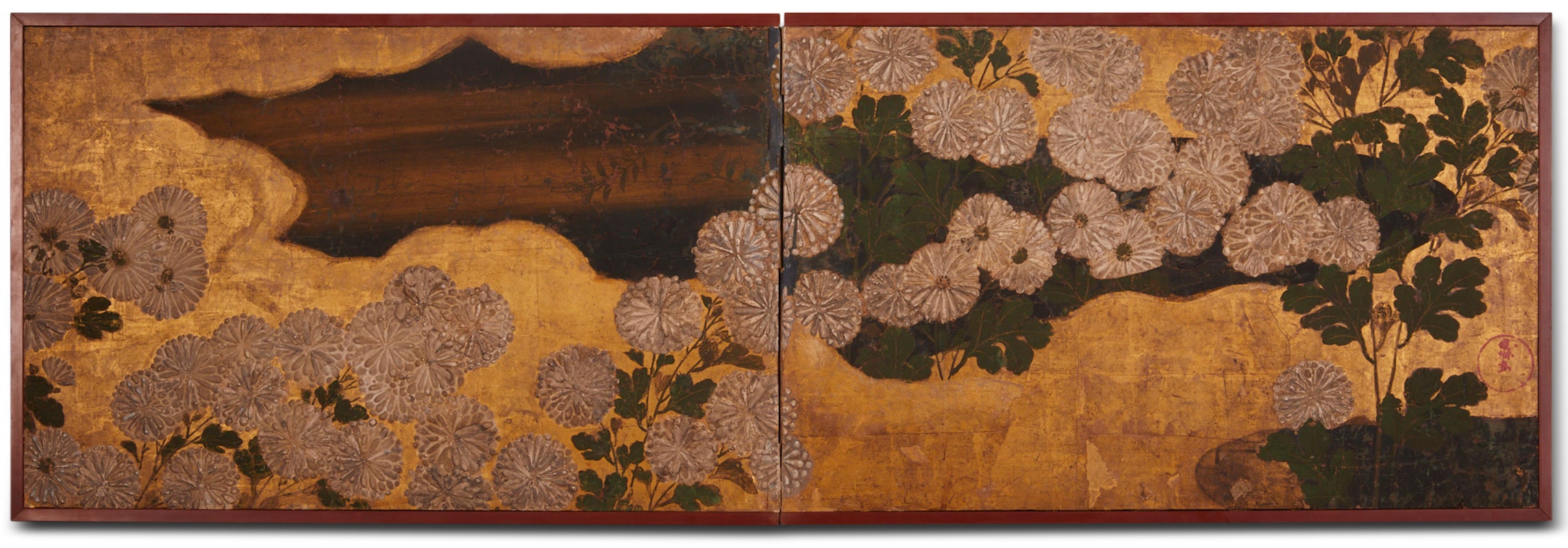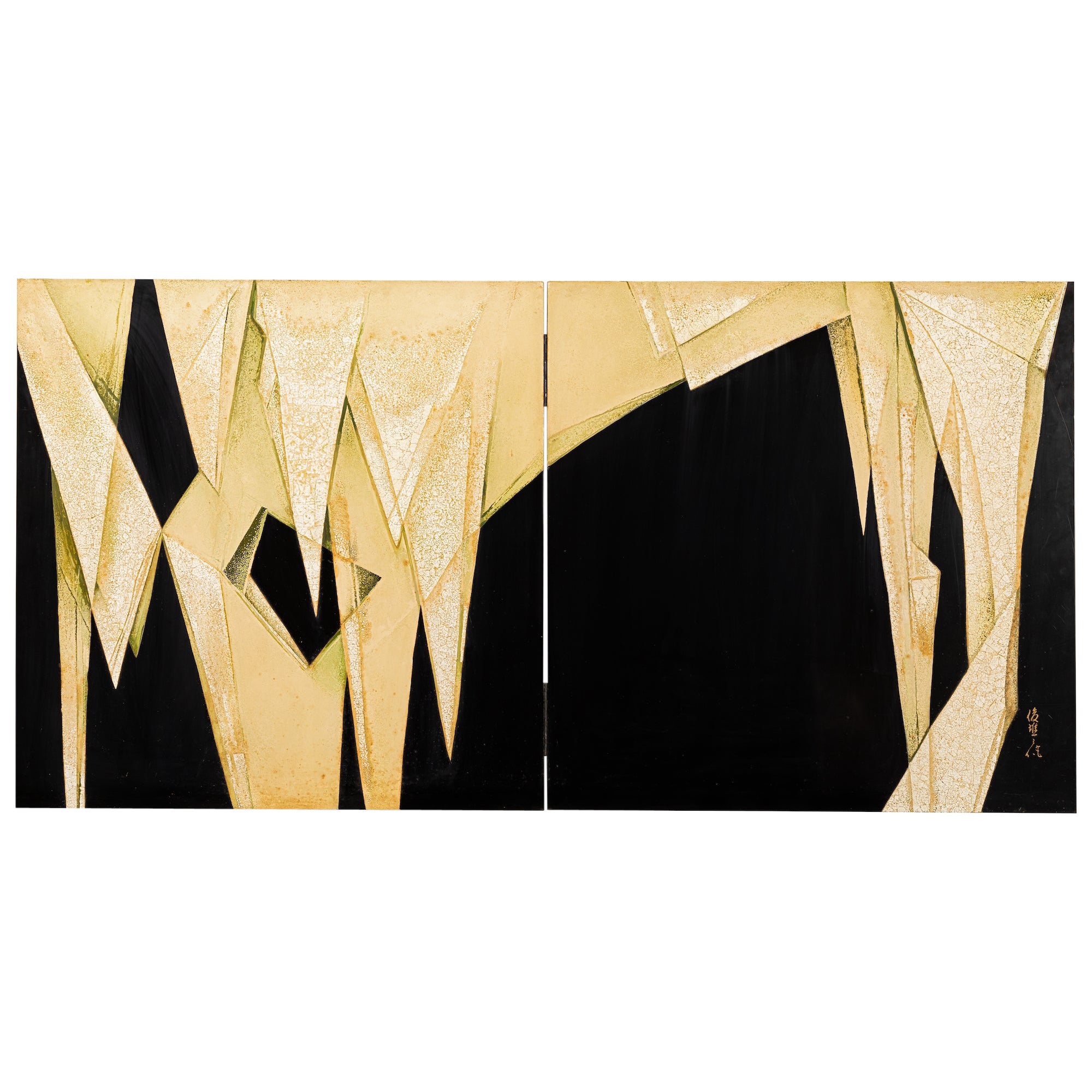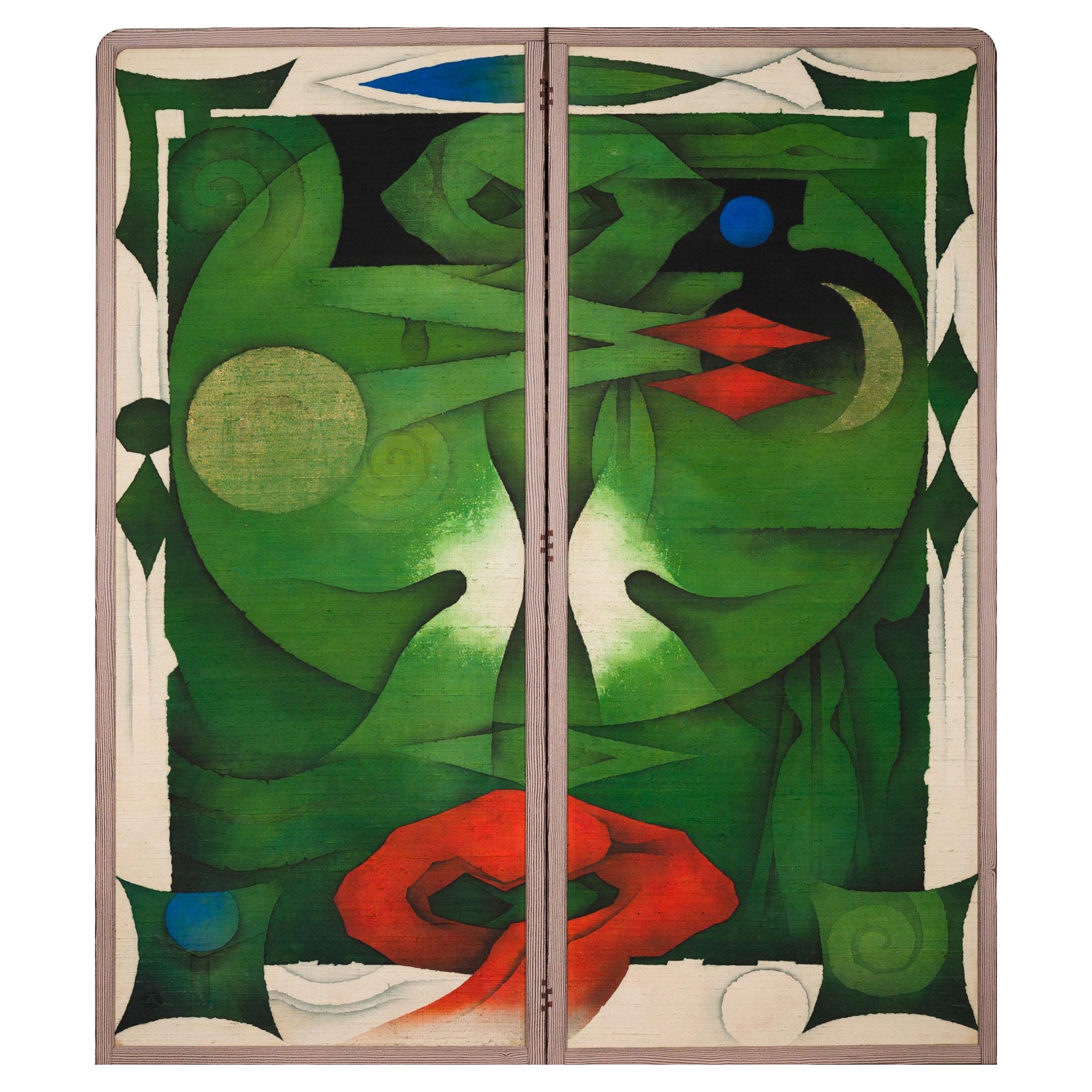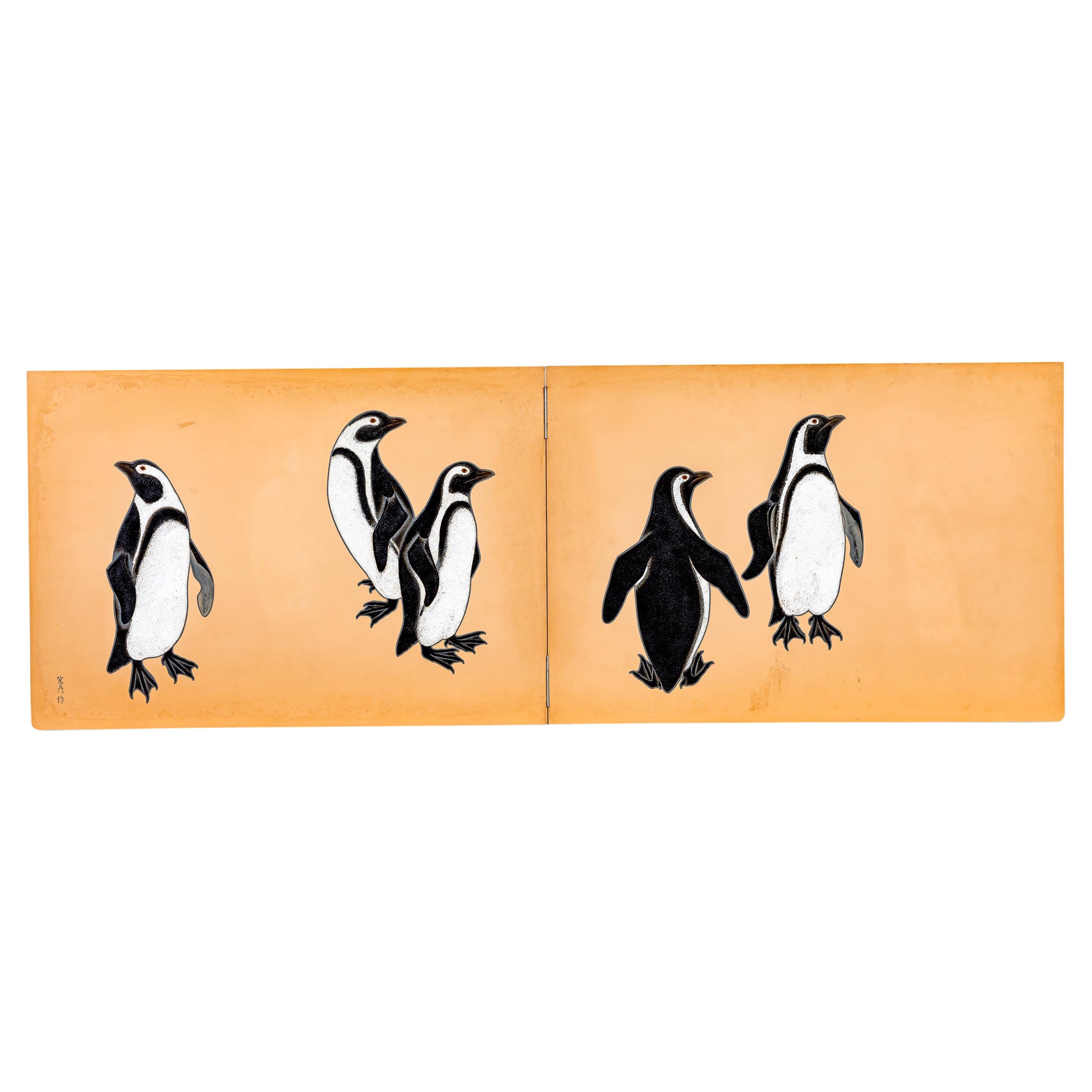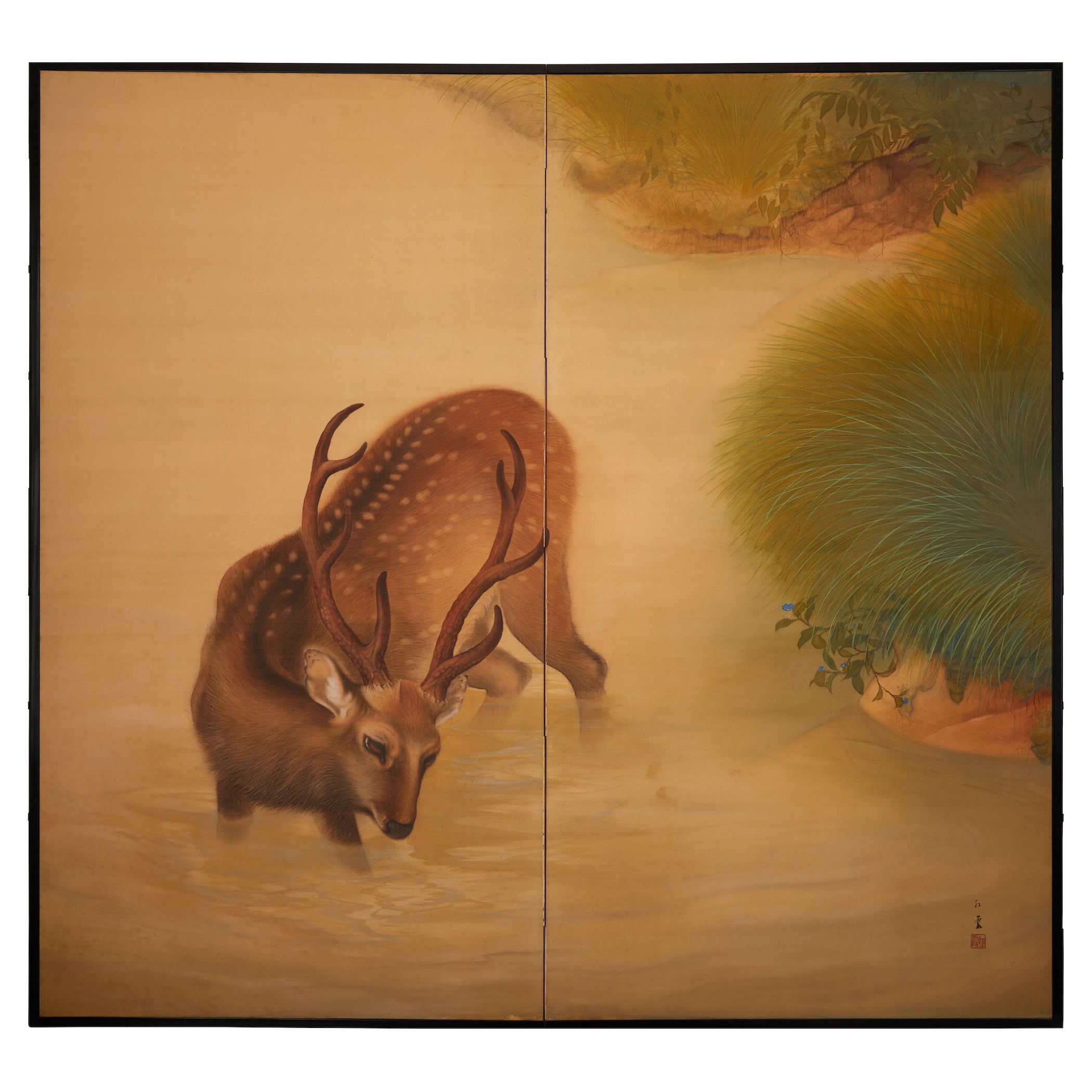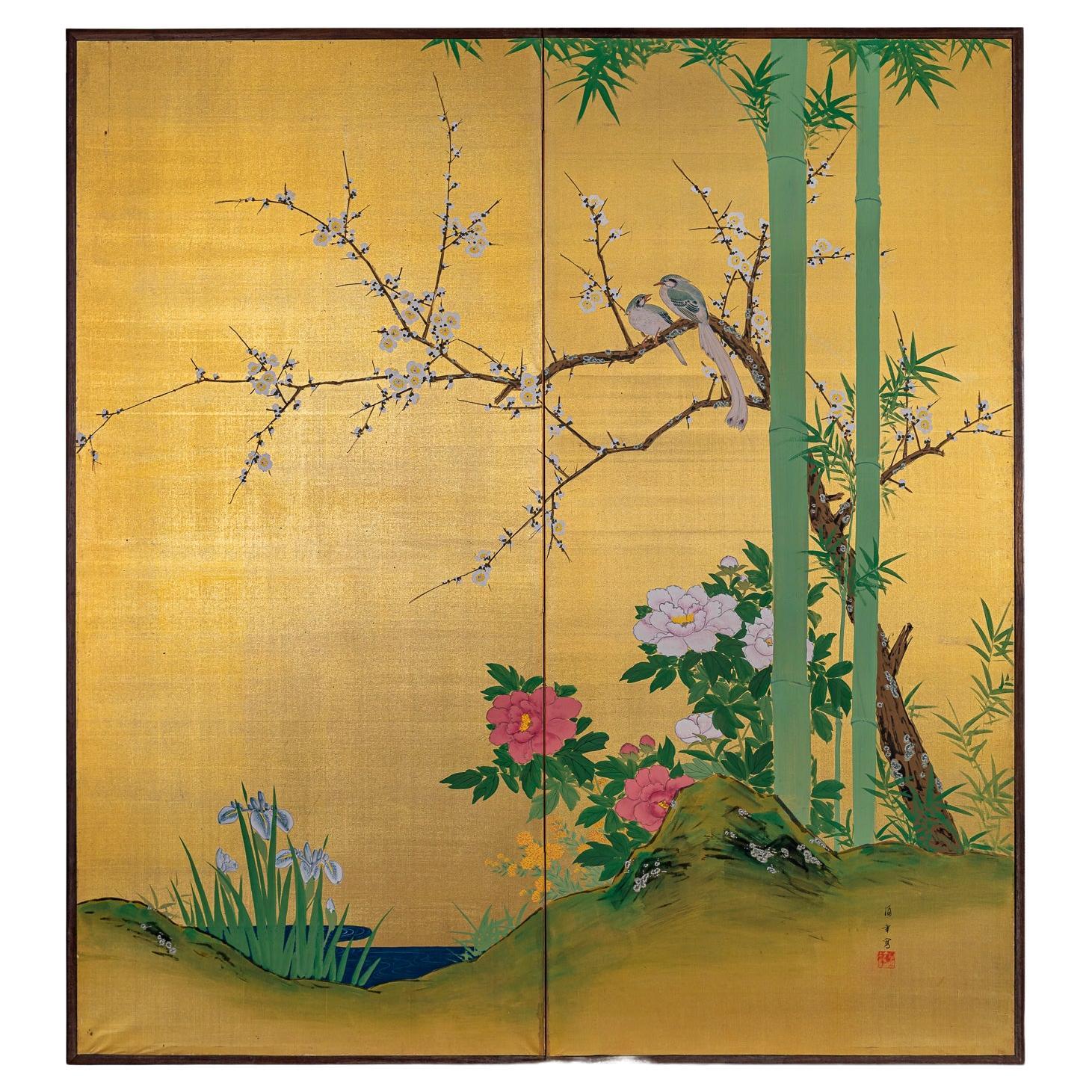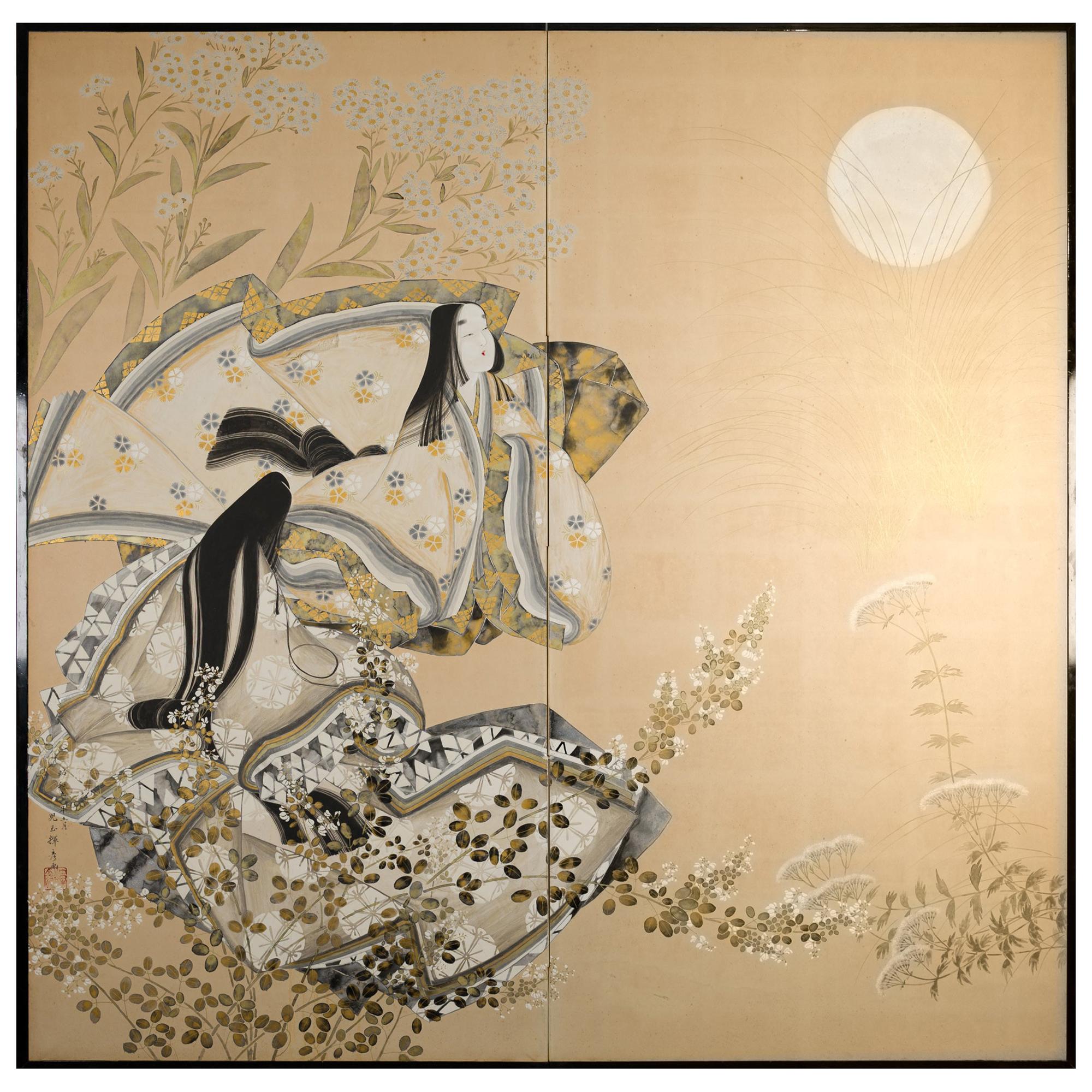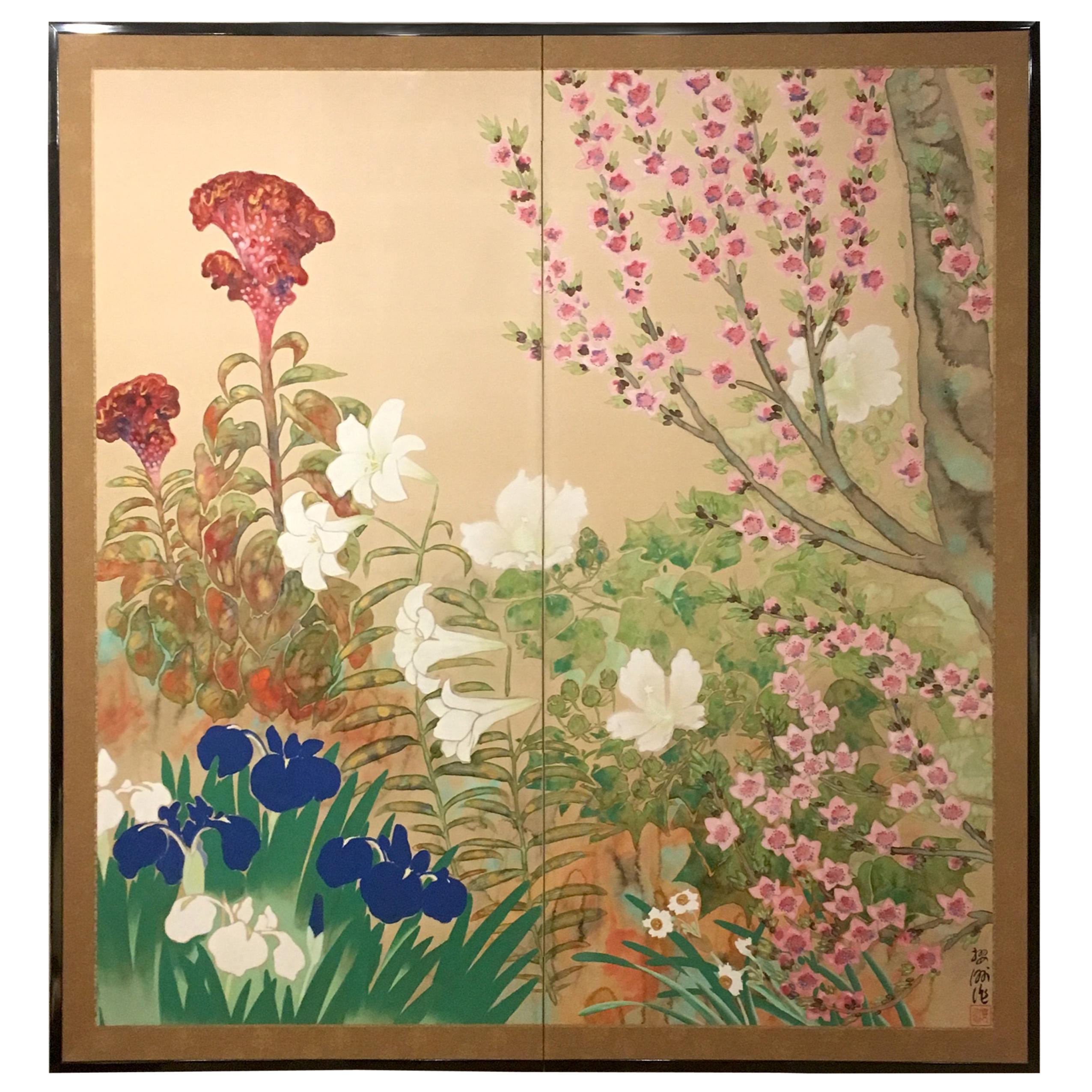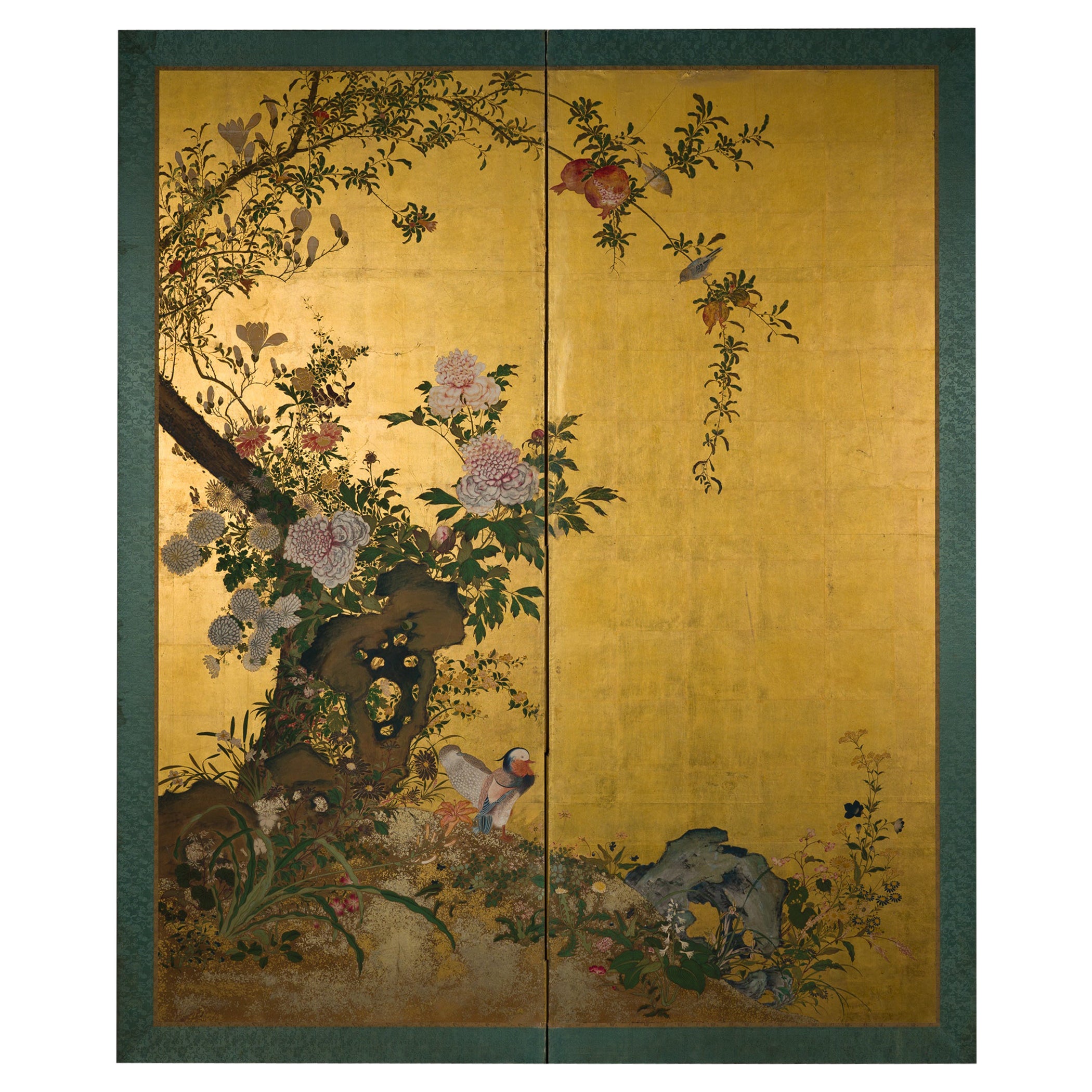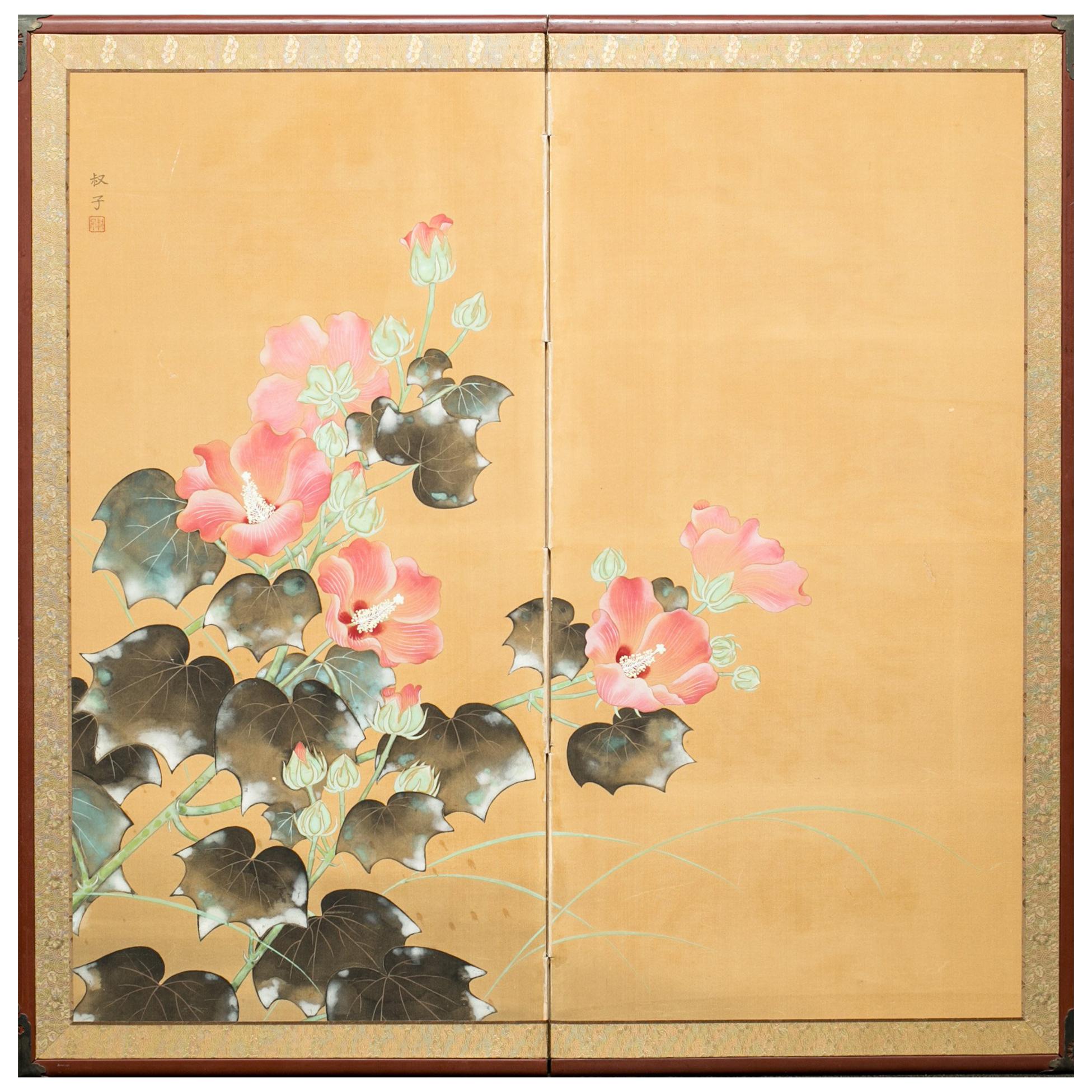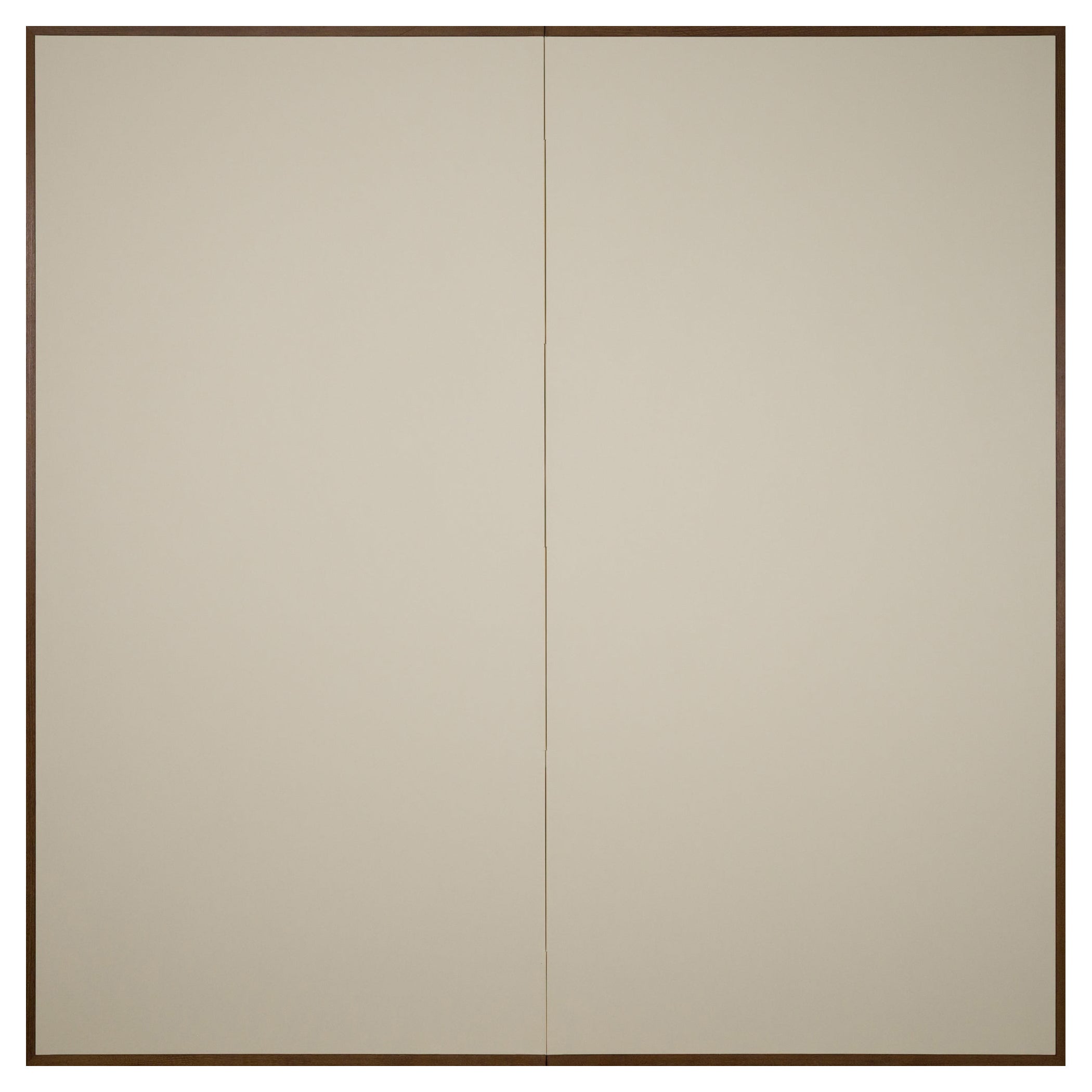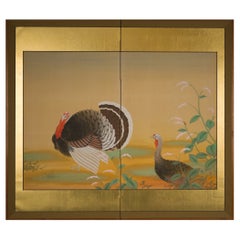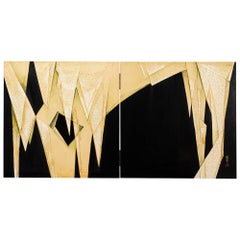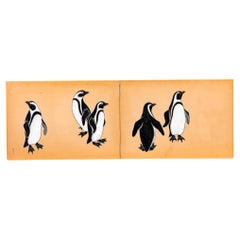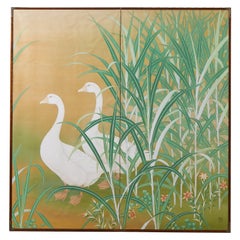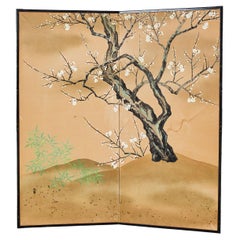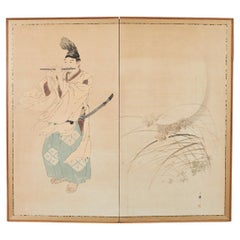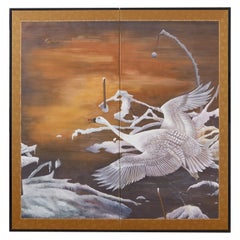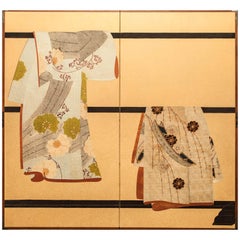
Japanese Two Panel Screen: Tagasode (Whose Sleeves?)
View Similar Items
Want more images or videos?
Request additional images or videos from the seller
1 of 8
Japanese Two Panel Screen: Tagasode (Whose Sleeves?)
$17,000List Price
About the Item
- Dimensions:Height: 68 in (172.72 cm)Width: 72.5 in (184.15 cm)Depth: 0.75 in (1.91 cm)
- Materials and Techniques:
- Place of Origin:
- Period:
- Date of Manufacture:Early 20th Century
- Condition:Condition report available upon request.
- Seller Location:Hudson, NY
- Reference Number:Seller: S13991stDibs: LU85514261553
About the Seller
5.0
Recognized Seller
These prestigious sellers are industry leaders and represent the highest echelon for item quality and design.
Established in 1971
1stDibs seller since 2008
166 sales on 1stDibs
Typical response time: 7 hours
Associations
The Art and Antique Dealers League of AmericaAntiques Associations Members
Authenticity Guarantee
In the unlikely event there’s an issue with an item’s authenticity, contact us within 1 year for a full refund. DetailsMoney-Back Guarantee
If your item is not as described, is damaged in transit, or does not arrive, contact us within 7 days for a full refund. Details24-Hour Cancellation
You have a 24-hour grace period in which to reconsider your purchase, with no questions asked.Vetted Professional Sellers
Our world-class sellers must adhere to strict standards for service and quality, maintaining the integrity of our listings.Price-Match Guarantee
If you find that a seller listed the same item for a lower price elsewhere, we’ll match it.Trusted Global Delivery
Our best-in-class carrier network provides specialized shipping options worldwide, including custom delivery.More From This Seller
View AllJapanese Two Panel Screen, Turkeys
Located in Hudson, NY
Mineral pigments on silk, mounted on a gold panel, in silk border. Signature and seal read: Yoho.
Category
Early 20th Century Japanese Paintings and Screens
Materials
Silk
Japanese Two Panel Screen, Chrysanthemums
Located in Hudson, NY
Beautiful white chrysanthemums are emphasized by heavy gold on a soft floral landscape, while gold clouds create a striking and dream-like floral scene. Gold leaf and gofun with min...
Category
Antique Early 18th Century Japanese Paintings and Screens
Materials
Gold, Gold Leaf
Japanese Two Panel Screen Abstract Design
Located in Hudson, NY
Lacquer on wood. Signature reads: Toshimasa. Solid black lacquer on reverse. Signed original box.
Category
Mid-20th Century Japanese Paintings and Screens
Materials
Lacquer
Japanese Two Panel Screen: Lacquer Penguins
Located in Hudson, NY
Beige ground lacquer with black and grey lacquer penguins with small pieces of shell making up white areas. Lacquer on wood. Writing reads: Lacquer Screen By Izumi Atsuhiko. It was ...
Category
Early 20th Century Japanese Paintings and Screens
Materials
Shell, Wood, Lacquer
Japanese Two Panel Screen Psychedelic Forms
Located in Hudson, NY
Celestial images on hand-dyed tsumugi cloth. Makers mark: unreadable.
Category
Mid-20th Century Japanese Paintings and Screens
Materials
Fabric
Japanese Two-Panel Screen, Wading Deer
Located in Hudson, NY
In Japan, it is a Shinto belief that the deer is a treasured and sacred animal. This admirable scene captures this gentle creature in its natural habitat with beautiful detail in bot...
Category
Early 20th Century Japanese Paintings and Screens
Materials
Silk, Lacquer
You May Also Like
Japanese Meiji Two Panel Screen Geese and Reeds
Located in Rio Vista, CA
Fantastic Japanese late Meiji period two-panel byobu screen by Hashimoto Koshu. The large screen features two white geese amid brightly colored reeds. The symbolism of geese and reeds was introduced to Japan from China in the 13th century. This was a popular subject for Japanese zen artists of the period. Beautifully crafted with exceptional brush strokes and details. Made with natural pigments in dramatic vivid colors of white, pink, and mint green on a silk background of gilt. Circa 1900 with artist seal on bottom right corner. Koshu studied Western art under...
Category
20th Century Japanese Meiji Paintings and Screens
Materials
Silk, Wood, Paper
Japanese Showa Two Panel Screen Blossoming Prunus Tree
Located in Rio Vista, CA
Serene Japanese Showa period two-panel folding byobu screen depicting a large spring blossoming prunus tree or plum tree. Beautifully painted with ink and natural color pigments on m...
Category
20th Century Japanese Showa Paintings and Screens
Materials
Brass
Japanese Taisho Two Panel Screen Heian Period Flute Player
Located in Rio Vista, CA
Extraordinary Japanese Taisho period two panel byobu screen depicting Fujiwara Yasumasa playing the flute in the Ichihara Moor. Fujiwara Yasumasa (958 to 1036) was a famous Heian period...
Category
20th Century Japanese Taisho Paintings and Screens
Materials
Silk, Wood, Paper
Japanese Style Two-Panel Screen Winter Goose in Flight
Located in Rio Vista, CA
Dramatic Showa period two panel folding byobu screen depicting a large white goose in flight in an evening snow covered winter landscape. Made in the American school style watercolor...
Category
20th Century Showa Paintings and Screens
Materials
Brass
Japanese Edo Two Panel Screen Deities by Yokoyama Kazan
Located in Rio Vista, CA
Whimsical Japanese late Edo period two-panel screen circa 1800 by Yokoyama Kazan (Japanese 1784-1837). The screen depicts four of the seven Gods or deities ...
Category
Antique 19th Century Japanese Edo Paintings and Screens
Materials
Brass, Gold Leaf
Japanese Six Panel Kano School Winter Landscape Screen
Located in Rio Vista, CA
Large Japanese Meiji period six-panel screen depicting a winter landscape with a Chinese sage visiting friends in a country villa. Ink and vivid color pigments on mulberry paper mounted to a gilt background. Painted in the 19th century Kano school...
Category
Antique 19th Century Japanese Meiji Paintings and Screens
Materials
Metal
